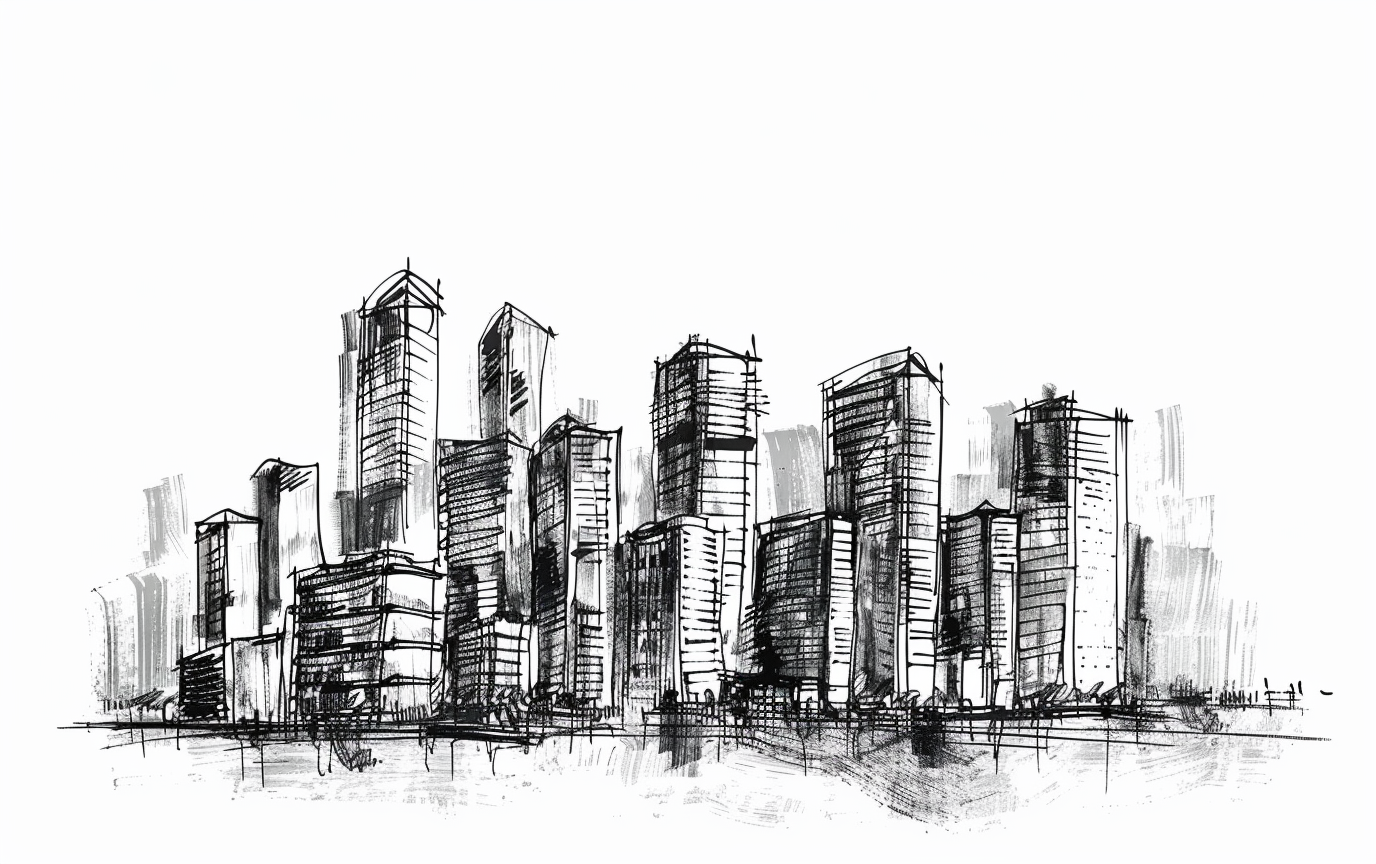
The Rise of Build to Rent: A New Competitor to New Build House Sales
This audio is auto generated by Google’s NotebookLM. It presents the blog in an alternative podcast style format. It’s not our intention to present this as real-life event or real people.
An alternative to the long-read. Whether it’s a tool to help people with neuro-divergences like ADHD or dyslexia or you simply want to listen in the car, this format might be for you.

The Rise of Build to Rent: A New Competitor to New Build House Sales
In recent years, the Build to Rent (BTR) sector has emerged as a transformative force in the UK housing market. Originally a niche area, BTR is growing rapidly, offering a strong alternative to the traditional model of new build house sales. The competition between these two approaches is shaping the future of housing development, with major implications for house builders, investors, and consumers alike. This blog explores the rise of Build to Rent, its growing appeal, and how it challenges the conventional homeownership model that has dominated the UK housing landscape for decades.
Build to Rent: A Brief Overview
Build to Rent refers to properties specifically developed for long-term rental, usually managed by institutional investors rather than individual landlords. These developments are designed with renters in mind, offering amenities such as gyms, co-working spaces, and communal areas, which cater to a growing demographic of tenants who value flexibility and lifestyle enhancements over ownership.
The rise of BTR in the UK can be traced back to shifts in housing demand and affordability issues. Increasingly, younger generations, particularly millennials and Generation Z, are prioritizing convenience, community, and flexibility over long-term property ownership. This marks a departure from traditional aspirations, where owning a home was seen as the ultimate financial goal. BTR developments are responding to this shift by offering lifestyle-driven rental solutions that go beyond just a place to live.
Why Build to Rent is Gaining Momentum
Several key factors are driving the expansion of the Build to Rent sector, and they all contribute to its growing competition with new build house sales:
1. Shifting Consumer Preferences
One of the primary reasons behind the surge in BTR developments is a change in consumer attitudes toward homeownership. As the cost of buying property in major cities continues to rise, many people are finding it increasingly difficult to save for a deposit or secure a mortgage. This has led to a generation of “generation rent,” where renting long-term is becoming more common than ever before.
Unlike previous generations, many of today’s renters are not simply waiting to buy; they actively prefer the flexibility and convenience that renting offers. Build to Rent caters to this demand by creating purpose-built properties that focus on delivering premium services and amenities, making them more attractive than traditional rented homes.
2. Urban Living and Lifestyle Appeal
Build to Rent developments are often situated in prime urban locations, offering easy access to transport, workspaces, and entertainment hubs. The urban lifestyle is a major draw for younger tenants, many of whom are looking for housing options that allow them to live close to work and social activities. The convenience of city living, combined with the added perks that come with BTR developments, makes them a highly attractive proposition.
Developers are focusing on creating vibrant communities within these BTR projects, offering shared spaces such as rooftop gardens, gyms, and entertainment areas. This fosters a sense of community and belonging, which is a key selling point for many prospective tenants. For consumers seeking a lifestyle choice rather than a property purchase, Build to Rent delivers a compelling option.
3. Long-term Investment Potential
The BTR model is also attractive from an investment perspective. Institutional investors, including pension funds and large-scale property developers, see Build to Rent as a stable, long-term investment opportunity. This is largely because rental income tends to be more predictable and less susceptible to short-term fluctuations in the housing market.
For developers, the demand for high-quality rental properties offers a lucrative opportunity to diversify away from traditional build-to-sell models. With a growing number of people renting by necessity or choice, BTR provides consistent demand for rental properties, ensuring a reliable income stream over time.
The Competitive Edge Over New Build House Sales
As Build to Rent continues to grow, it is increasingly becoming a direct competitor to new build house sales. While house builders have traditionally relied on the demand for homeownership to drive sales, the rise of BTR poses new challenges to this business model. Below are some of the ways BTR developments are gaining a competitive edge:
1. Affordability Crisis
The affordability of homeownership in the UK has become a major issue, particularly for younger generations. Rising house prices, coupled with stagnant wage growth, have made it difficult for first-time buyers to step onto the property ladder. According to government data, the average house price in the UK has increased significantly over the past decade, while deposit requirements have also grown, further widening the gap between aspiring homeowners and actual buyers.
In contrast, Build to Rent developments offer a solution for those priced out of the housing market. By providing high-quality rental properties with a focus on community and lifestyle, BTR allows tenants to access desirable living spaces without the financial burden of ownership. This makes BTR particularly appealing to those who are not ready or able to buy a home but still want to live in premium housing.
2. Flexibility in Living Arrangements
Another key advantage of Build to Rent is the flexibility it offers compared to homeownership. In a society where job mobility is increasing, many people are reluctant to commit to buying a property that may tie them to one location for an extended period. Renting allows for greater flexibility, enabling tenants to move for work, travel, or personal reasons without the long-term financial commitment associated with buying a house.
Build to Rent developments capitalize on this desire for flexibility by offering short- and long-term rental agreements that suit various lifestyles. Whether tenants are looking for a temporary solution or a longer-term residence, BTR provides options that are tailored to modern living needs.
3. Amenities and Services
Build to Rent properties are purposefully designed to offer far more than just a place to live. They come equipped with a range of amenities that appeal to a lifestyle-focused audience. Many developments include gyms, communal gardens, cinemas, and concierge services, all of which add to the overall value of the rental experience. These features are often lacking in new build houses, where the emphasis is typically on ownership rather than lifestyle.
For consumers, the convenience and added value of these services make renting in a BTR development more attractive than purchasing a new build house. As a result, BTR is often seen as a more modern, forward-thinking option for housing.
Real-World Example: Manchester’s Build to Rent Boom
Manchester is one of the key cities leading the Build to Rent revolution in the UK. The city has seen a surge in BTR developments in recent years, driven by high demand for rental properties and a growing urban population. Major BTR schemes, such as Angel Gardens and The Slate Yard, have transformed the city’s housing landscape, offering premium rental apartments with a host of amenities designed for modern living.
These developments are located in prime urban locations and offer everything from rooftop terraces to co-working spaces, attracting a mix of young professionals and families. Manchester’s success with BTR has prompted other cities to follow suit, with London, Birmingham, and Leeds also witnessing significant growth in the sector.
Branding and Marketing in the Build to Rent Sector
As BTR continues to expand, branding and marketing play a crucial role in distinguishing one development from another. For developers, building a strong brand that resonates with target audiences is essential to attracting tenants and creating a sense of community.
A well-executed branding strategy goes beyond the physical design of the property; it communicates the lifestyle and values associated with the development. Whether it’s highlighting sustainability, promoting wellness, or emphasizing urban convenience, a clear and compelling brand message helps set a BTR development apart from both new build house sales and other rental properties.
Marketing campaigns for BTR often focus on digital platforms, where younger, tech-savvy audiences are most active. Social media, content marketing, and email campaigns are commonly used to showcase the benefits of BTR developments, from the amenities on offer to the community atmosphere. These strategies are essential for attracting consumers who are seeking a high-quality rental experience that aligns with their lifestyle choices.
What This Means for House Builders
The rise of Build to Rent presents both challenges and opportunities for traditional house builders. On one hand, BTR developments are attracting a significant share of the market that would otherwise be potential buyers. On the other hand, house builders have the opportunity to diversify their portfolios by entering the BTR space themselves, either through joint ventures or by creating dedicated BTR divisions within their companies.
For house builders focused on new build sales, understanding the competition from BTR is crucial to remaining competitive in a changing market. By adapting to consumer preferences and incorporating elements of the BTR model—such as amenities, flexible living options, and community-focused designs—developers can continue to attract buyers who are weighing their options between purchasing and renting.
The Future of Build to Rent and New Build Sales
The growth of Build to Rent shows no signs of slowing down. According to research from the British Property Federation, the number of BTR homes under construction or completed increased by 13% in the first quarter of 2023. This upward trajectory suggests that BTR will continue to be a major player in the UK housing market for years to come.
For new build house sales, the competition from BTR is pushing developers to innovate and find new ways to attract buyers. As the housing market evolves, house builders may need to rethink their approach to residential development, focusing on creating homes that offer not just ownership, but also the lifestyle and community aspects that BTR developments excel at.
Conclusion: A Balanced Housing Future
While Build to Rent offers a compelling alternative to new build house sales, both sectors have a vital role to play in meeting the UK’s housing needs. The competition between these models is ultimately beneficial for consumers, offering more choice and flexibility in how they choose to live.
For house builders, the rise of BTR presents an opportunity to adapt and evolve. By incorporating the best elements of BTR into new build developments—such as lifestyle-focused amenities and flexible living arrangements—house builders can ensure they remain relevant in a rapidly changing market. As the housing landscape continues to shift, embracing new trends like BTR could be key to attracting consumers and launching successful new developments.
DS.Emotion’s Expertise in Branding and Marketing
At DS.Emotion, we understand the importance of strong branding and effective marketing in the Build to Rent sector. Our services, from branding to digital marketing campaigns, are designed to help developers launch successful projects that attract and retain tenants. Whether you’re developing a BTR project or focusing on new build sales, our expertise can help you stand out in a competitive market. Reach out to us to learn how we can elevate your next development project.
Ready to launch your next development and meet the UK’s growing housing demands? Contact DS.Emotion today to explore how our services can elevate your project from concept to completion.